K Sankara Rao*1, Sringeswara A.N2, Deepak Kumar3, Arun Singh R1, Imran Baig1,
Ravali M1, Sasidhara Kaimal1, Navendu Page1, Ramachandra T.V1 and Sumesh Dudani1 |
|
Planet earth is inhabited by an awe-inspiring variety of living beings, all intertwined in a delicate web. Conservation of this staggeringly diverse life, the biodiversity, assumes greater importance today than before as the world is facing an unprecedented loss of species. India being one of the mega-biodiversity countries has enormous stakes in preserving its flora and fauna.
Also, biodiversity knowledge management mechanism and its implementation have become essential for the developing countries, especially in today’s competitive world of Intellectual Property Rights (IPR).
By collecting and collating data, recording the information and disseminating this knowledge using the latest technologies available, Third World countries will be able to manage their biodiversity better and help maintain nature’s fragile balance.
At the end of the last millennium, we witnessed the birth of a new field of science, the biodiversity informatics. However, this calls for high level of collaborations among data producers, custodians, information managers, IT professionals and cross-discipline interactions. Given the fact that information infrastructure is just beginning to span its way, it is not surprising that biodiversity knowledge gathered and documented for centuries within many developing and under-developed nations still remains dispersed, distributed in books, journals, specimen collections in museums, herbaria, but not in an exchangeable form (Nandita Chaudhri and Surinder Kumar, 2010). In the case of plant informatics, botanists have tremendous responsibility in developing necessary knowledge bases for rendering them easily accessible.Herbarium-based databases
Herbaria are special kind of data banks for plants with vast quantities of authentic information and the specimens therein provide a lasting record of the flora of a location or a region. Digital Herbaria and databases online on regional floras are initiatives in the emerging area of biodiversity informatics, which are aimed at developing readily accessible knowledge bases on plants to help achieve the goals of sustainable resource management and species conservation. A conventional herbarium-based database (virtual herbarium), thus maximizes the usefulness of the collection by providing authentic and lasting information.
Although India has an excellent collection of specimens vouchered and maintained in several well known herbaria, digital (virtual) herbaria are very few. Recently, some virtual herbaria have been launched. To name a few, The Herbarium of French Institute of Pondicherry-HIFP (http://ifp.plantnet-project.org/); LWG-virtual herbarium of National Botanical Research Institute, Lucknow (http://www.nbri.res.in/herbarium/); Regional Plant Resource Center (RPRC digital herbarium) Odisha (http://www.rprcbbsr.com/herbarium/); The Janaki Ammal Herbarium, (Formerly RRL, Jammu – http://www.iiim.res.in/herbarium/herbarium.htm); KFRI-Kerala Forest Research Institute Herbarium (http://kfriherbarium.org) and National Institute of Oceanography (NIO) Digital Herbarium (www.nio.org). Other than these, there are attempts to digitize the herbarium specimens and make them web-based at other places including the Botanical Survey of India. These attempts are either partially complete or still in infancy.
Herbarium JCB-Database Initiative
The idea of building an exhaustive database depicting and describing every single species within Karnataka state occurred to the corresponding author when he was given access to the Herbarium at the Centre for Ecological Sciences, Indian Institute of Science, Bangalore. Known internationally as Herbarium JCB (JCB, International acronym), the herbarium was meticulously built for several years by Dr. Cecil J. Saldanha. It houses about 14,570 specimens belonging to about 5000 species of plant groups such as angiosperms, gymnosperms, ferns and allies. The collection is richest in species from the forests of Western Ghats, an area not well represented in most South Indian Herbaria, correctly identified and the determinations authenticated by specialists, and duplicates deposited with herbaria of Royal Botanic Gardens, Kew, England and the Smithsonian Institution, Washington DC, USA. It is perhaps the only holding in the region that has specimens collected from all over Karnataka state. Specific families well represented in the herbarium include Cyperaceae, Fabaceae,Scrophulariaceae, Orchidaceae, Poaceae, and Pteridophytes.
Seven years of tenacious work of our dedicated team resulted in developing this herbarium-based plant database for the state of Karnataka, to be presented shortly on the ‘Herbarium JCB’ website. The database is designed to be user-friendly, interactive, and exhaustive with respect to species information. The main objective of this initiative is to generate a readily accessible information system to help evolve strategies for effective conservation and sustainable utilization of plant resources.
The flora of Karnataka is one of the richest in the country and belongs to diverse vegetation types and formations ranging from coastal land plants to montane flora of the Western Ghats, from four-storied tropical evergreen monsoon forests to semi-arid thorn forests and scrub. Of the 38,224 km2 of forest spread over thirty districts, a large proportion of it is embedded in the sprawling Western Ghats regarded as one of global hotspots of Biodiversity. Western Ghats are also home to an overwhelming majority of plant species of the state with immeasurable diversity.
Enumeration of the state’s flora was attempted at different points of time. Flora of Presidency of Madras by J. S. Gamble, one such earlier work that included parts of present-day Karnataka state, was carried out before independence. Post-independence, floristic work was carried out by the Botanical Survey of India but not with the intent and intensity to accomplish an exhaustive inventory exclusively for the state. Nevertheless, several valuable district level floras were brought out within the state from time to time. ‘Flora of Karnataka’ was the first ever state-wide floristic initiative carried out between 1978 to 1996 under the stewardship of Dr. Cecil J. Saldanha. Further, the information deriving from this state-wide collection was compiled into publications, ‘Flora of Hassan District’ and ‘Flora of Karnataka’ Vol. I and II dealing with polypetalous flowering plant families.
Features of the database
The information content in this plant database is largely built on the voucher specimens housed at the Herbarium JCB. The taxonomic arrangement of Angiosperms, Gymnosperms followed is as proposed by A. Cronquist ('The Evolution and classification of flowering Plants-1968') and Dr. C.R. Fraser-Jenkins (Taxonomic revision of Indian subcontinental Pteridophytes, 2008) for ferns and its allies.
The taxonomic data portrayed on each species page includes species name, author citation, family name, nomenclature updated as accepted name (‘The Plant List’- http://www.theplantlist.org/), common name, vernacular name (in Sanskrit, Hindi, Kannada), collector(s) name, collection number(s), collection locality, key identification features, habit of the plant, phenology, native range, endemism, conservation (Threat) status ('IUCN'-http://www.iucnredlist.org), distribution pattern and literature referred.
The database further features detailed description of species as documented in the floras, scanned Herbarium specimen(s), Line drawing(s) and Field images of species and a Comment widget for notes and feedback.
The herbarium specimens (Fig.1) were digitized at a minimum resolution of 300dpi using an indigenous In-house Herbarium Scanning Equipment (IHSE).
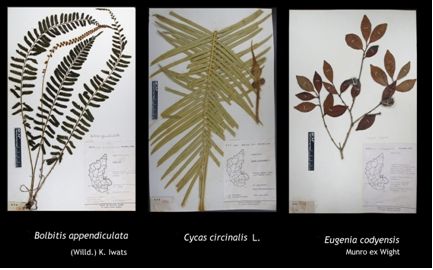
Figure 1: Some of the digitized herbarium specimens
Apart from digitized specimens, the database also contains images of live specimens (Fig.2).
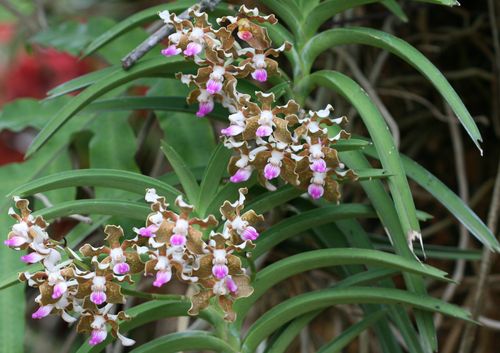
Figure 2: Vanda tesselata, an orchid as it appears in the database image gallery
The digital photography that has emerged as an exciting medium for expression in the recent times is a thrilling overlap between science and art. It can be used to increase the universal appreciation of the infinite variety and beauty of natural form and colour. This appreciation must lead to greater desire to conserve our dwindling resources of nature. More often today, people use photographs to record their finds and sightings. Through the critical eye of the camera the photographer develops new awareness of the wilderness in general and of its inhabitants (life).
Shapes, patterns, textures, light and shadow have a new depth of significance. Recent technological advances and increased availability of reliable equipment has also made it relatively easy to produce pin sharp pictures.
Accurately drawn true-to-the specimen illustrations (Line Drawings-Fig.3.) such as shape of the corolla, number of locules, ovules, their disposition depicted in a line drawing form a valuable synergy to species documentation that forms an information synergy.
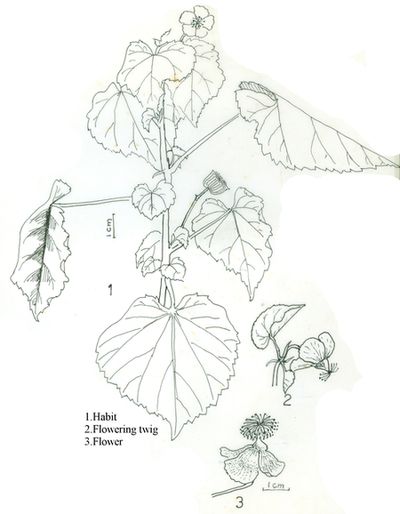
Figure 3: Line drawing of Abutilon hirtum
An image gallery is provided that allows species to be identified by browsing images (Fig.4). Each image is hyperlinked to the corresponding species web page. Alphabetically-sorted species names, both botanical and vernacular and family lists allow users to browse by species name and family, respectively. The website provides basic and advanced search capabilities. Text entered in basic search is searched in all fields of the herbarium database while advanced search allows text to be searched in one or more fields (for example, genus, threat status, or common name). A comment widget allows users to report corrections or provide feedback.
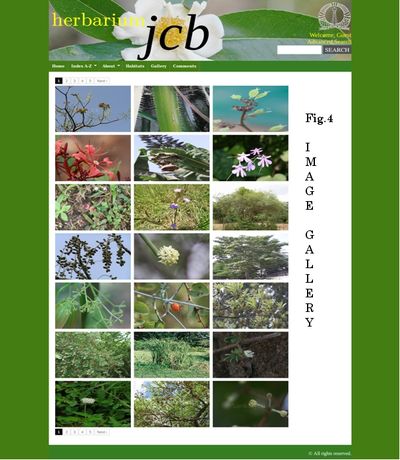
Figure 4: Image gallery in JCB database
Website design
Plant taxonomic data to be presented on the ‘Herbarium JCB’ was first entered on Microsoft Excel spreadsheets by herbarium staff and volunteers. The data were subjected to scrutiny for accuracy and formatting consistency and subsequently imported into MySQL database tables.
The website was developed using standard open-source software on the Linux operating system including Apache, a web server (http://www.apache.org/), MySQL, a database system (http://www.mysql.com/), and PHP, a scripting language (http://www.php.net/). Plant taxonomic data was stored in the database which allows rapid indexed searches to be carried out and the content to be generated dynamically. Binary (non-text) content such as high-quality digital image files and documents requiring considerable storage are stored on the file system instead of inside the database for greater efficiency.
Tips to use the herbarium database effectively
- Digital Herbarium JCB is developed and maintained by the Centre for Ecological Sciences (CES), Indian Institute of Science (IISc), Bangalore.
- The homepage includes a write-up on Herbarium JCB, Herbarium Usage Policy, Frequently Asked Questions, Mission statement, Members, Important Visitors, News and Contact details.
- The browsing menu includes Index A-Z; About Us; Habitats; Image Gallery and Comments.
- 'Index A-Z' displays drop-down lists of botanical, common and vernacular names of species and list of plant Families
Alphabetically sorted Species and Family lists allow the users to browse by species and family name respectively.
Specific alphabet can be chosen only after any one list is displayed.
For example, you wish to see a species by name, 'Gordonia-obtusa'; select the 'Species' from Index A-Z. Click the alphabet 'G', a list of species starting with letter 'G' appears; look for the required species.
Click on the species name, the species page is displayed. - Similarly, the details of the chosen species can be browsed through the family list.
Use 'Back' button to re-load the previously displayed page. One can browse the species of Karnataka by placing cursor on respective menu icons of the Index A-Z. - The browsing menu 'About Us' gives information on IISc, CES, Karnataka.
- The browsing menu 'Habitats' displays a film strip of various habitats
- The browsing menu 'Gallery' displays a collection of field images which allows species to be identified by browsing images. Each image is hyperlinked to the corresponding species page.
- The browsing menu 'Comments' allows the user to report corrections or provide feedback.
- The icon 'Members' on the homepage gives details of the Herbarium Committee, Herbarium-in-Charge, Explorers and the Database research team.
- The icon 'Visitors' lists eminent taxonomists who visited this Herbarium.
- The icon 'News & Publications' displays the updates, events, publications related to the herbarium activities.
- The icon 'Contact' gives details of Herbarium-in-charge, Herbarium Office and the Herbarium Library.
- The database provides 'Basic' and 'Advance Search' capabilities.
Text entered in Basic search is searched in all fields of the herbarium database.
To be able to avail Advance Search capabilities, click on the 'Advance Search' option provided at the top of the homepage. A new page is displayed listing various search fields.
Texts entered in one or more fields filters the navigation to the relevant information. [Eg: Endemism, Threat Status, Phenology etc.]
For certain search fields on this page a drop-down menu is provided to further narrow down search capabilities.
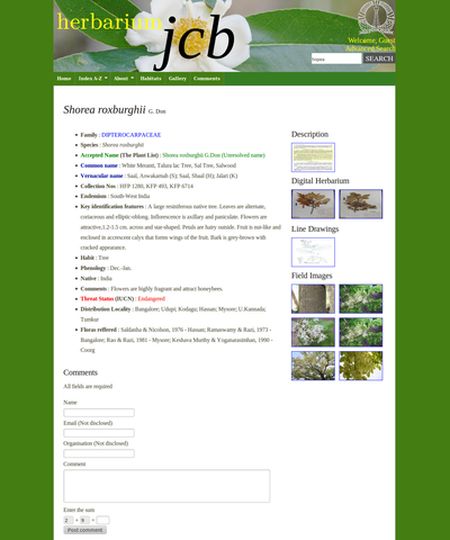
Figure 5: Screen shot of a species page as it appears in the database
Conclusions
A herbarium-based database is an information system that provides access to data on plant diversity of a region(s) or on the collection that the herbarium has in its care. The information content of the database is essentially built on the voucher specimens. The presentation of this information implies that the voucher specimens shown are available with that herbarium for examination and for further research and that the data strictly pertains to the species vouchered in the specimens. Herbarium specimens hold such hidden information that is not obtainable in a photograph or in a lengthy description. For this reason, herbaria and organizations hosting databases must exercise management activities to safeguard these specimens. A conventional herbarium database, thus, maximizes the usefulness of the collection by providing authentic and lasting information.
References
- Saldanha, C. J. and Nicolson, D. H. Flora of Hassan District, Karnataka, India, Amarind Publishing Co. Pvt. Ltd., New Delhi and C. J. Saldanha, 1976
- Saldanha, C. J. Flora of Karnataka, Oxford and IBH Publishing Co., New Delhi, 1984, Vol. 1.
- Saldanha, C. J., Flora of Karnataka, Oxford and IBH Publishing Co., New Delhi,1996, Vol. 2
- Gamble, J. S. Flora of the Presidency of Madras, London: West, Newman and Adlard, 1915-1934, Vols 1-3.
- Sharma, B. D. and Singh, N. P., Raghavan, R.S. and Deshpande,U. R., Flora of Karnataka: Analysis, Botanical Survey of India, Kolkata, 1984.
- Ramaswamy, S. V. and Razi, B. A., Flora of Bangalore District, Prasaranga, University of Mysore, Mysore, 1973
- Ramesh, S. R., Studies on the Flora of Kolar District, Ph. D. thesis submitted to University of Mysore, Mysore, 1990
- Rao, R. R. and Basheer Ahmed Razi., A synoptic flora of Mysore District: with an appendix of unani, ayurvedic, and trade names of drugs, Today & Tomorrow's Printers and Publishers, 1981
- Murthy, K. R. K. and Yoganarasimhan, S. N., Flora of Coorg (Kodagu), Karnataka, India with data on Medicinal Plants and Chemical constituents, Vimsat Publishers, Bangalore, 1990
- Gopalakrishna Bhat, K., Flora of Udupi, Indian Naturalist, Udupi, 2003
- Seetharam, Y. N., Kotresha, K. and Uplaonkar, S. B., Flora of Gulbarga District, Gulgarba University, Gulbarga, 2000
- Manjunath, B. K., Krishna, V. and Pullaiah, T., Flora of Davanagere District, Regency Publications, New Delhi, 2004.
- Ramaswamy, S. N., Radhakrishna Rao, M. and Govindappa D. Arekal., Flora of Shimoga District, Karnataka. Prasaranga, University of Mysore, Mysore, 2001
- Singh, N. P., Flora of Eastern Karnataka, Mittal Publications, New Delhi, 1988, Vols. 1-2
- Gowda, B. K., Vanaspathikoshi – Plant Wealth of Sringeri,Kalpatharu Research Academy, Bangalore, 2004
- Yoganarasimhan, S. N., Subramanyam and Razi, B. A., Flora of Chikmagalur District, International Book Distributors, Dehra Dun, 1982
- Bhat, K. G. and C R Nagendran, C. R., Sedges and Grasses: Dakshina Kannada and Udupi Districts, Bishen Singh Mahendra Pal Singh, Dehra Dun, 2001.
- Nandita Chaudhri and Surinder Kumar. Digital archiving and management at NIC. Informatics, 2010, 18 (3), 12-13.
- Tetali, P., Tetali, S. and Lale, M. Computer-based herbarium sheets and their uses in plant identification, Proceedings of National Seminar on Plant Biodiversity Systematics Conservation and Ethnobotany, Department of Botany, North Bengal University, November 9-11, 2000.
- Singh Harbhajan, Handbook on Herbaria in India and Neighbouring countries. NISCIR, CSIR, New Delhi, 2010.
Acknowledgements
The authors wish to express their sincere appreciation to the Centre for Ecological Sciences, IISc for providing facilities and support. Our thanks are also due to many volunteers and contributors of field images. We are grateful to authors of different district floras for according permission to reproduce data from their works. These authors are Prof. K. Gopalakrishna Bhat (Poornaprajna College, Udupi), Prof. T. Pullaiah, (Sri Krishnadevaraya University, Anantapur) Dr. R. Raghavendra Rao (Honorary INSA Scientist, GKVK, Bangalore).
We express our gratitude to Rev. Fr. Francis Serrao SJ, Provincial- Bangalore Jesuit Educational Society for according permission to reproduce Fr. Cecil J.Saldanha's Floras.
We also thank Dr. M Sanjappa, former Director, Botanical Survey of India for validating identification of Legumes., Dr. Christopher Roy Fraser-Jenkins, Pteridologist, Kathmandu for identification of Ferns., Rev. Dr. Leo D’Souza SJ, former Principal and Rector of St. Aloysius College, Mangalore and Prof. Sharat Chandra, Director, Center for Human Genetics, Bangalore for their encouragement.
The help of Mr. Yashwant G Kanade, Mr. K. Venkatesulu, Ms. Padmavati and Ms. Revarani of Biological Sciences Library, IISc with books and reference materials is gratefully acknowledged.